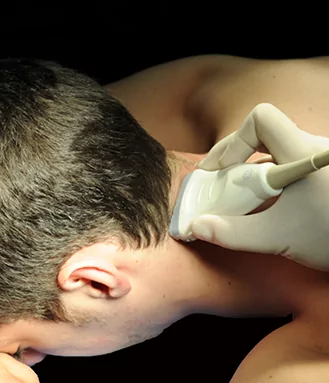Place the patient prone with the neck exposed.
Place a linear high-frequency probe in the axial plane across the external occipital protuberance.
Parallel shift the probe caudad to the bifid spinous process of C2. Move the probe lateral to identify the obliquus capitis inferior muscle and rotate the probe slightly to be parallel to the long axis of the muscle.
Visualize the greater occipital nerve on top of the obliquus capitis inferior muscle (see next page).
Insert the needle from the lateral end of the probe and advance the needle tip until it is in touch with the target nerve.
Inject 0.5 mL of local anaesthetic perineurally.









